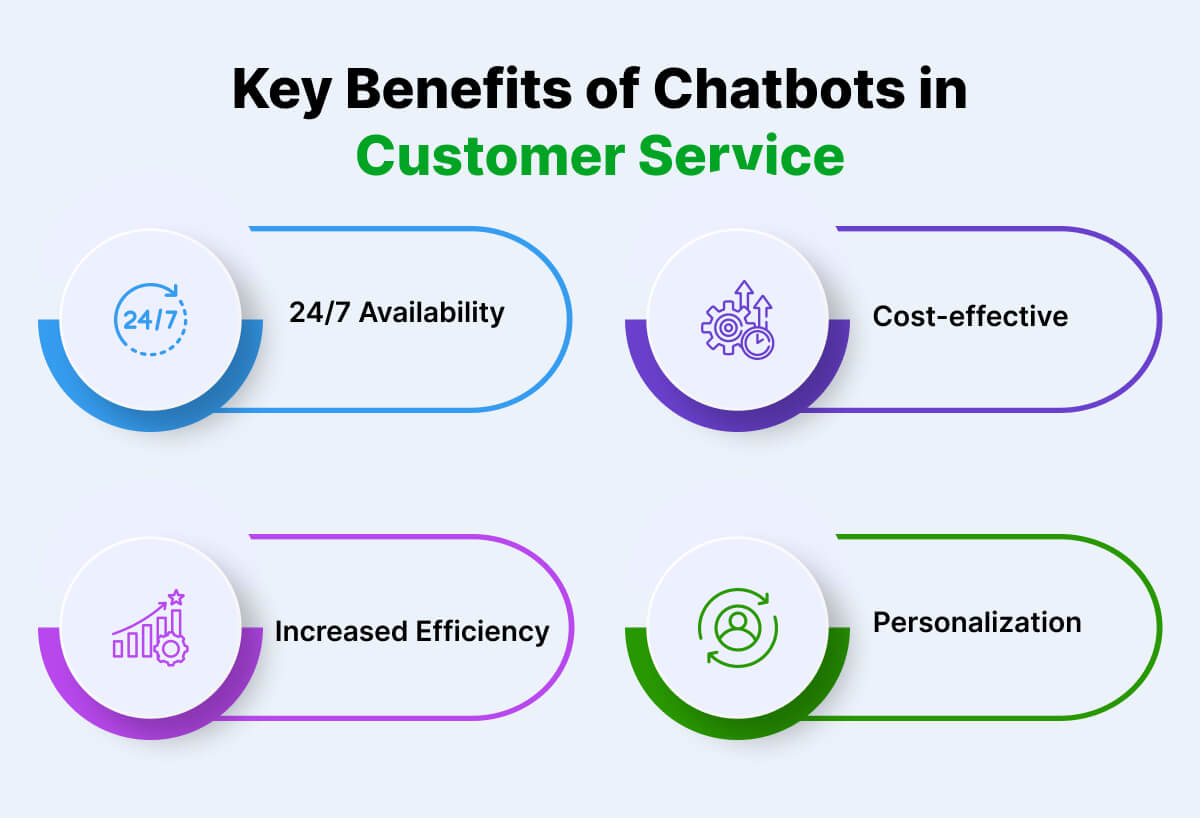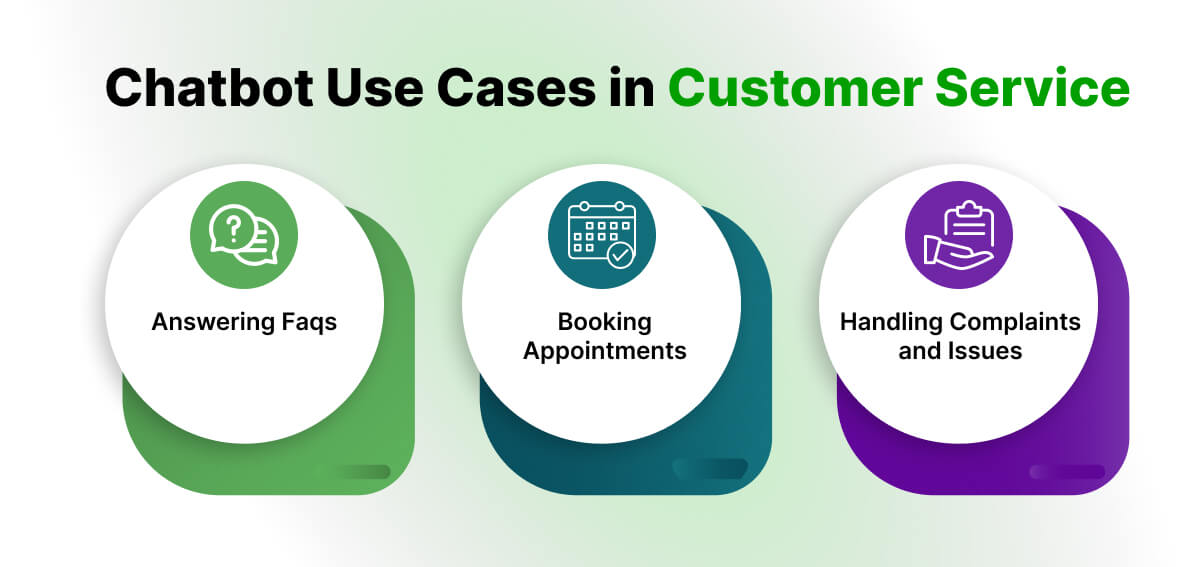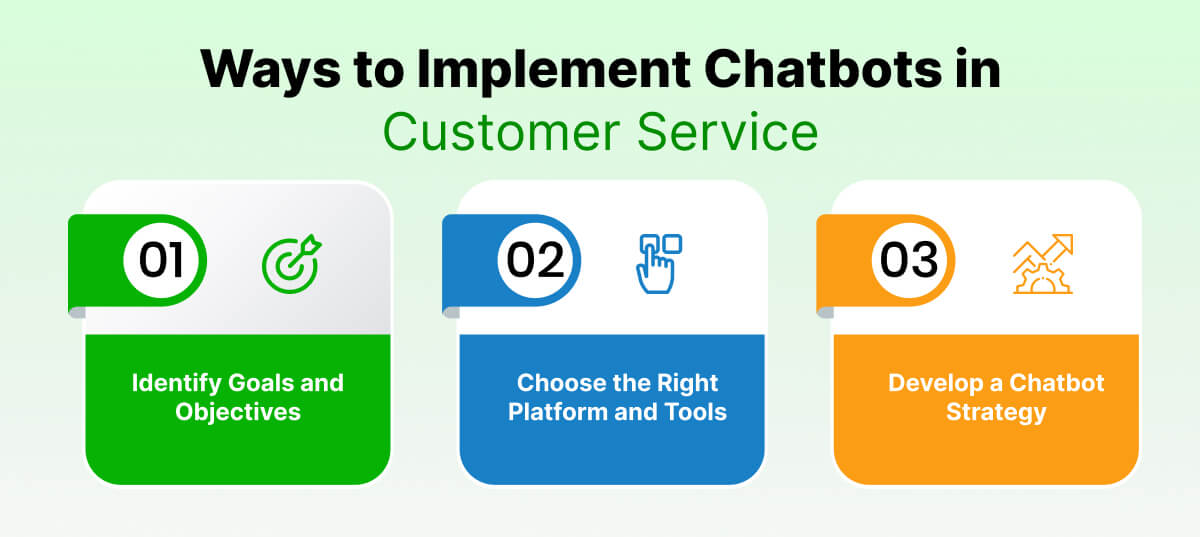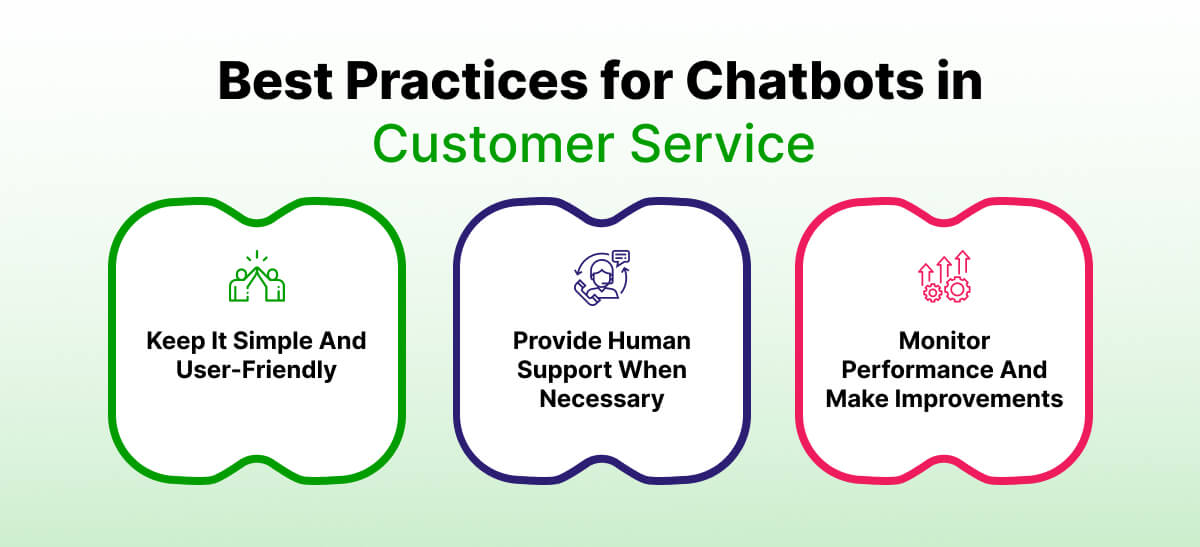 Chatbot
, Customer Service
Chatbot
, Customer Service

13 March, 2023

Chatbots are software applications that use artificial intelligence and natural language processing to interact with customers via text or voice. They provide fast, accurate, consistent responses to customer queries, requests, and feedback. Chatbots can also automate repetitive tasks and processes, such as booking appointments, collecting information, or issuing refunds.
According to the Statista report, consumers are interested in the chatbots’ functionalities, with 44 percent of respondents appreciating the help of chatbots in finding product information before the actual purchase.
In this article, we will explore the role of chatbots in customer service, the benefits they can bring to both customers and businesses, some examples of chatbot use cases in different industries, and how to implement chatbots in your customer service strategy. We will also share some best practices and tips for creating effective and engaging chatbots to enhance customer satisfaction and loyalty.
Contents

Chatbots are becoming increasingly popular in customer service, and for good reasons. They offer many benefits for both businesses and customers, such as:
One of the main benefits you can get from chatbots in customer service is their 24/7 availability. Unlike human agents, chatbots can provide instant and consistent responses to customers any time of the day or night. This can improve customer satisfaction, loyalty, and retention and reduce operational costs and workload for the service team.
Another benefit of chatbots is that they can reduce operational costs and increase business revenue. Chatbots can save money by reducing the need for human agents, who can be expensive to hire, train, and retain.
You can reduce operational costs by letting chatbots handle a large volume of customer queries without requiring additional staff. They can also automate repetitive and mundane tasks, such as password resets or order confirmations, freeing human agents to focus on more complex and valuable issues.
Chatbots can also generate revenue by upselling and cross-selling products and services, providing personalized recommendations and offers, and collecting customer data and feedback. Chatbots can also improve customer retention and loyalty by providing consistent, high-quality service.
Chatbots can also improve the efficiency and productivity of customer service teams. These AI-powered software applications can handle simple and repetitive tasks that would otherwise take up a lot of time and resources for human agents.
They can provide faster and more accurate responses to customer queries by accessing a database of information and using natural language processing to understand customer intent. They can also escalate issues to human agents when needed or transfer customers to the right department or channel, reducing wait times and frustration.
This helps free human agents to focus on more value-added tasks requiring empathy, creativity, or problem-solving skills. Chatbots can also reduce human errors and mistakes by providing accurate and reliable information.
Chatbots can also provide personalized and tailored customer service based on their preferences, behavior, history, and profile. They use natural language processing and machine learning to understand customer intent and sentiment and provide relevant and appropriate responses.
Chatbots can also use customer data and feedback to customize their interactions and offer personalized solutions, suggestions, or incentives. This can increase customer engagement, satisfaction, trust, and loyalty.
Chatbots are more than just a tool for customer service. They can also be a powerful marketing tool by providing customers with personalized recommendations, offers, or incentives based on their behavior, interests, or needs. For example, a chatbot can:

Customers expect fast, personalized, and effective solutions to their problems and queries, and they are not satisfied with long wait times, repetitive conversations, or human errors. That’s why more and more businesses are turning to chatbots to enhance their customer service and provide a better customer experience.
Chatbots can be used for various customer service scenarios, but here are some of the most common and beneficial ones:
The most common use case for chatbots is answering frequently asked questions (FAQs) that customers have about a product, service, or company. FAQs can range from simple queries like “What are your opening hours?” or “How can I track my order?” to more complex ones like “How do I cancel my subscription?” or “What is your refund policy?”
Chatbots can provide instant and accurate answers to these FAQs, saving customers time and frustration. Chatbots can also reduce the workload and cost of human agents who can focus on more complex and high-value tasks. Chatbots can also provide links to relevant resources or web pages for further information or guidance.
Another everyday use case for chatbots is booking appointments for customers who need to schedule a service, consultation, or meeting. For example, a chatbot can help a customer book a haircut, a dental checkup, or a demo session with a sales representative.
Chatbots can make booking easier and faster for customers by asking them a few questions about their preferences, availability, and contact details. Also, these applications can check the service provider’s availability, confirm the booking details, send reminders and notifications, and reschedule or cancel appointments if needed.
One of the chatbots’ most challenging use cases is handling customer complaints and issues with a product, service, or company. Customers who are unhappy or dissatisfied with their experience expect a quick and empathetic response from the business, and they may escalate their issue to social media or review platforms if they are not satisfied.
Chatbots can help resolve complaints and issues by acknowledging the customer’s problem, apologizing for the inconvenience, and offering possible solutions or alternatives. Chatbots can also escalate the issue to a human agent if it is too complex or sensitive for the chatbot to handle. Chatbots can also collect customer feedback after resolving their issue and use it to improve their performance.
Chatbots still need to be perfect and cannot completely replace human agents. However, they are a powerful tool that can complement human agents and provide a seamless and satisfying customer service experience for customers. If you want to improve your customer service and grow your business, I highly recommend using chatbots.

Chatbots are becoming more popular and useful in various industries, especially in customer service, due to their faster, easier, and more personalized service to their customers. However, implementing chatbots in customer service is not a simple task. It requires careful planning, execution, and evaluation.
Here are some tips on how to implement chatbots in customer service based on my own experience:
The first step to implementing chatbots in customer service is identifying your goals and objectives. What do you want to achieve with chatbots? How do you measure success? What are the benefits and challenges of using chatbots? Some common goals and objectives for chatbots in customer service are:
The next step is to choose the right platform and tools for your chatbot. Many platforms and tools are available for chatbot development, such as Microsoft Bot Framework, Dialogflow, IBM Watson Assistant, Amazon Lex, etc. Each platform and tool has its own features, advantages, and limitations. You need to consider factors such as:
The final step is to develop a chatbot strategy that covers your chatbot’s design, development, testing, deployment, and evaluation. A chatbot strategy should include the following:
As a marketer who uses chatbots for customer service, chatbots have helped me improve customer relationships and business performance. Chatbots have enabled me to:
However, I also faced some challenges when implementing chatbots in customer service. Some of the challenges were:
To overcome these challenges, I followed some best practices such as:

Chatbots are becoming more and more popular as a way to provide fast, efficient, and personalized customer service. Chatbots can help businesses improve customer satisfaction, reduce operational costs, and increase sales. However, not all chatbots are created equal. To make the most of chatbots in customer service, businesses need to follow some best practices that ensure a smooth and positive experience for both customers and agents. Here are some of them:
In conclusion, chatbots are a powerful tool for customer service that can benefit both businesses and customers. However, to make the most of chatbots in customer service, businesses need to follow some best practices that ensure a smooth and positive experience for both customers and agents. These best practices include keeping it simple and user-friendly, providing human support when necessary, monitoring performance, and improving.